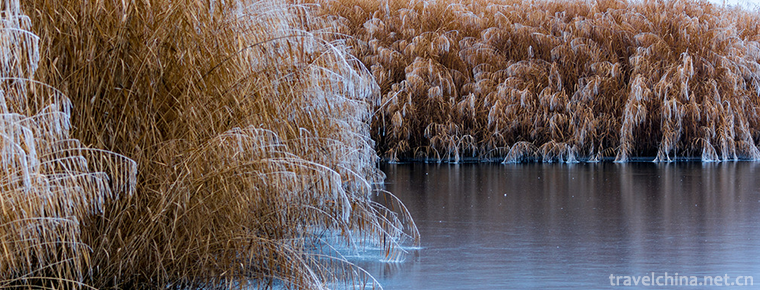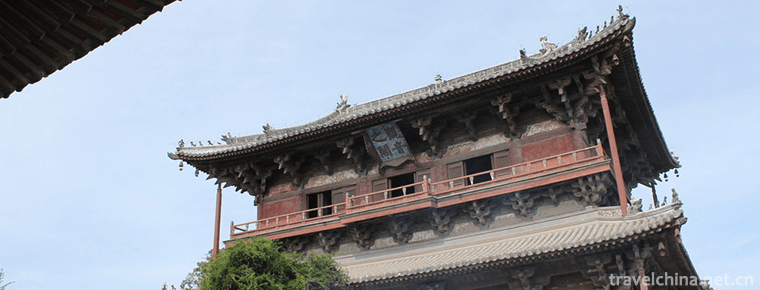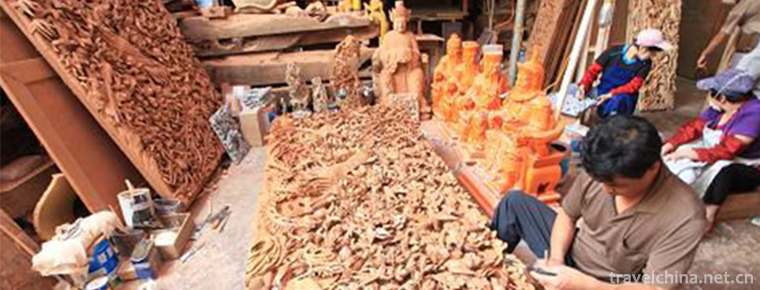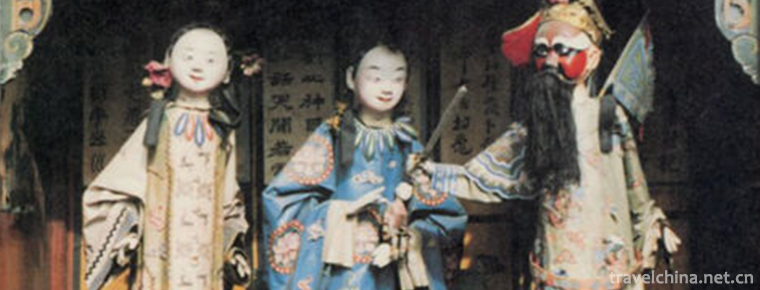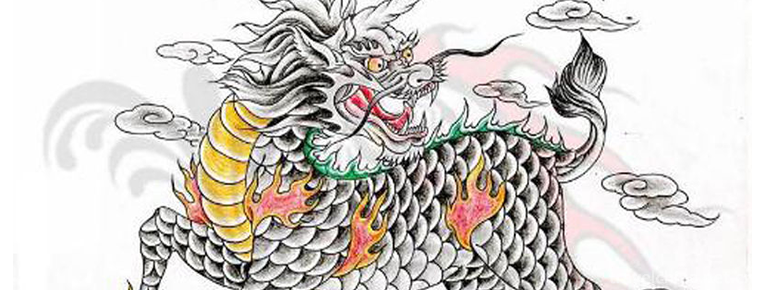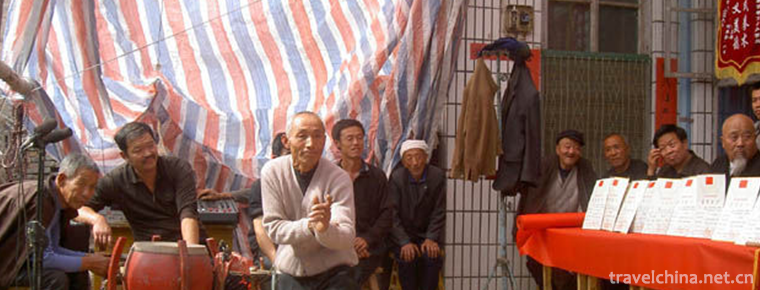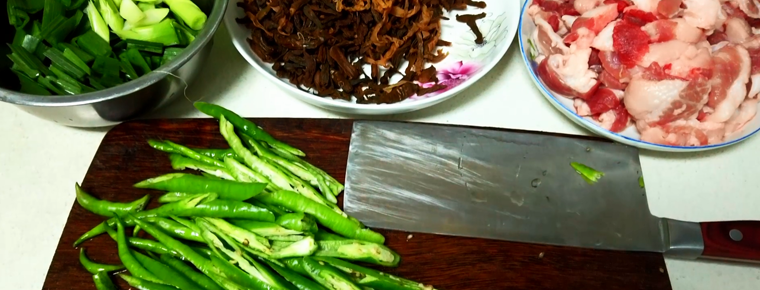Hui folk instrumental music
Hui folk instrumental music
Hui folk instrumental music is a long-term life practice and cultural activities of the Hui people in Ningxia, inheriting ancient instruments of Ningxia and northwest frontier fortress instruments and their music, and gradually developing them into unique Hui folk instruments.
On May 20, 2006, Hui folk instrumental music was approved by the State Council and listed in the first batch of national intangible cultural heritage list.
Brief introduction
In the long-term life practice and cultural activities, Ningxia Hui inherited the ancient instruments of Ningxia and the northwest frontier fortress instruments and their music, and gradually developed them into unique Hui folk instruments. Tang Taizong Li Shimin's poems of "Hu Dun Qing Yusai, Qiang Di Yun Jinbo" and "I don't know who plays the reed and expects all the people to go home overnight" in "Drinking Ma Great Wall Cave Travel" are all true descriptions of local popular instrumental music after visiting Lingzhou in ancient Ningxia at that time. Due to historical changes, these instruments have been very rare among the Han and other minority nationalities in China, but they were still popular among the Hui people in Ningxia until the 20th century.
historical origin
In the last century, Chinese historians of literature and history have proved that Wow Woo, Mi Mi and Mouth String are the evolution and remains of ancient musical instruments such as Qiang, Qiang Di, Reed Pipe and Reed, which have been circulated in Ningxia since the Han and Tang Dynasties. Tang Taizong Li Shimin's poems of "Hu Dun Qingyu Plug, Qiang Di Yun Jin Bo" and "I don't know who blows the reed pipe and expects people to visit their homeland overnight" in "Drinking Ma Great Wall Cave Travel".
artistic characteristics
Ningxia Hui musical instruments have formed unique performing skills, production techniques and playing and singing arts. The Hui musical instrument "handle" (master) can use cross trembling fingers to blow out the brilliant colors which are difficult to appear on the high-pitched whine. The musical instruments made by Hui artists resemble ox heads and lambs. They are decorated with Hui artistic patterns and lines, and carved with Arabic calligraphy. They have distinct Hui cultural characteristics. Because of their beautiful timbre, easy to play and easy to carry, they are handed down from generation to generation among the Hui people in Ningxia. Some Hui villages, whether young girls or white-haired elderly people, have a small mouth string, while the Hui's Gawa and youth are good at blowing and whining. The proverb "Whooping sings, crops grow; Mimi blowing, cows and sheep strong" is a reflection of the custom of returning to the country. Hui women wearing head covers and hand strings have been recognized as image ambassadors of the Hui people in Ningxia.
Representative works
Blow Mimi
Every spring, willows turn green, riverbanks, terraces, fairs and temple fairs, there is a melodious, almost trivial sound of playing music. This is the folk musical instrument "Mimier", which Qinghai Hui teenagers like and are good at. This instrument is made of bamboo pipe with ring finger, which has six holes and resembles flute, but it needs to be blown upright. The mouthpiece is handled with a proud voice made of tender bark (the best is made of "cat's thorn" branches). The sound is blown out by the principle of film vibration pronunciation. The melody is played by adding a scale of six holes and a total of seven scales of one's own scale. Mimi is divided into two types, single and double. It is most suitable for playing "juvenile" tune.
Qiang Mouth-String Music
One of the Hui folk musical instruments is the mouth string. Mouthstring is a small folk musical instrument that Hui girls especially like, commonly known as "harmonica" or "mouth title". In the leisure time, when the main night falls, women gather in twos and threes to play an inciting chord to relax, or to express their deep and complex feelings by placing their wives'thoughts on their husbands who are away from home.
Most of the chords are made of yellow steel, red copper or silver, similar to the steel hairpins commonly used by women today. There is an extremely thin copper sheet in the middle, which is a loudspeaker. The sizes of the chords vary, ranging from about an inch and a half in length to smaller ones. When playing, the sound reed is gently moved by the tip of the tongue or finger in the mouth string, and the interval and volume are controlled by the change of the mouth shape and the amount of breath.
There are two kinds of mouth strings, one is made of iron and the other is made of bamboo. Tinkou strings are also found in other nationalities, and bamboo strings are more common among Hui girls.
Bamboo chord, as its name implies, is cut with bamboo. It looks simple, but it pays attention to craft. Generally good mouth chords are made of bamboo, cut into about five inches, fry them in a frying pan, and then take them out and carefully cut them with a knife. The chords made in this way are bright and smooth, strong and durable, and are not easy to crack. From the effect point of view, the volume is moderate, crisp and soft.
The bamboo chords made by Hui girls are generally three inches long and one head is small. When playing, the left hand holds the tip of the chord and gently holds one end of the tongue spring between the lips. The middle finger and the thumb of the right hand hold the other end of the silk spike and pull it evenly, which makes the chord spring produce a special charming sound of "grunt, grunt".
There is no obvious intonation in the chord of the mouth. It is mainly through the shape, strength and rhythm of the mouth that the girl expresses her feelings of joy, anger, sorrow and music.
Hui girls usually carry their beloved mouth chords with them. Hui girls in the southern mountain areas of Ningxia also like to use them as decorations, tied to the second button on their chest, and bounce up whenever they have a chance. Some sat alone at home to relieve depression; others sat together to express their feelings and amuse each other; others sat in groups to compete with each other, playing harmony familiar to both Hui men and women. Such as pearl roll-up curtain, camel bell, five elder brothers sheep, foot song and so on.
There are many legends about mouth chords among Hui people. There is a story in Liupanshan area of Ningxia. Earlier, a wealthy man saw a very beautiful and targeted Hui girl. He wanted to force her to marry. If the girl refused, the wealthy man dug her eyes and made her mute. The girl made a chord of bamboo and accused the young people and villagers of the sins of the rich. Later, in memory of her, the girls made a chord.
In the past, Hui women were not allowed to go out, to sing and dance, or to go out and talk about love on their own because of religious restrictions. They are often confined at home, depressed and depressed, so they use the chord to relieve their worries. The days of the Hui people are getting more and more prosperous. When the Hui girls are happy, they play with their mouthstrings to amuse them. Some of them take the bullet string as the trumpet and go out with their boyfriends.
Nu Tau
The Hui people also have a favorite musical instrument called Niutou Qiang, commonly known as "wow" or "mud chop", which is a small folk musical instrument made of strong and durable yellow clay. In ancient times, it was called "Qiang". According to the historical records, "Cheng, an ancient wind instrument made of pottery. Big as goose eggs, shaped like a weighing hammer, top pointed flat hollow, top hole for the blower, front four holes, back three holes. In the early feudal period, this kind of musical instrument was used in court orchestras, which gradually disappeared and was rarely seen in folk performances.
In the long-term coexistence and cultural exchanges with other nationalities, the Hui people, inspired by other nationalities playing musical instruments, according to the basic principles of ancient "Qiang", combined with the customs and habits of their own nationalities, have created the unique folk musical instrument "Niutou" of the Hui nationality in practice, which has been handed down from generation to generation.
Niutoucheng is easy to make, easy to get materials and popular. Children aged seven to eight to eleven or twelve in Hui communities all like to play with clay to make "Niutouqiang". As long as they have time, they dig a piece of clay in riverside and canal soil, mix and knead it with water to form a ball of clay, then make it into various shapes, such as round, egg-shaped, butterfly-shaped, fish-shaped, cowhead-shaped, etc. After drying, they drill several small holes with a thick wire or a rough bleaching stalk. There is a blower with four small mouths pressed by hands. Some competitive children also use oil to polish the "mud whine" shape smooth and shiny, and some are put into brick kilns to burn, which is strong, durable and good-looking.
Niutou Long, with a range of five degrees and a scale of 12345, can play some simple and slow tunes, such as "North Wind Blows", "Chinese Cabbage" and Hui folk minor. It can also be used to make bird calls. When some young Hui people in rural areas date, the men first blow "Niutou" near the woman's home, while the women play "mouth string" to him, and the two men go out to meet.
In 1984, at the performance of folk artists in Ningxia Hui Autonomous Region, Ding Chengcai, an old Hui artist, played a piece of music with the flavor of "Koran" by the Hui people with Niu Tau Long, which was unique and refreshing. However, due to the narrow vocal range of Niutoucheng, it is difficult to accompany and ensemble because it can not express fast tunes. In order to bring Niutou Long onto the stage, Ningxia musician Feng Huiyun has developed a new type of Niutou Long, which has a circular top, a narrow top, a wide bottom and a conical mouthpiece, on the basis of the Hui folk Niutou Long. This kind of Niutou Long has been increased from five to twelve. In this way, the mouth can be blown out of the fifth tone, plus the eleventh tone of the hole, can play and solo the general music of ancient, modern and foreign. Has been moved to the stage, deeply loved by the Hui people.
Inheritance significance
In recent decades, due to the influence of people's lifestyle changes and other factors, the social soil for the survival of Ningxia Hui instrumental music is rapidly disappearing, and the instrumental music inheritance is facing a crisis. The older generation of artists have changed their careers, many young people have no idea what words, mimi, whoops are. In order to protect Ningxia Hui folk instrumental music effectively, we should establish protection mechanism and corresponding system as soon as possible, strengthen propaganda, and strive for wider attention of the whole society.
The state attaches great importance to the protection of intangible cultural heritage. On May 20, 2006, Hui folk instrumental music was approved by the State Council and listed in the first batch of national intangible cultural heritage list.


-
Bosten Lake Scenic Area
Bosten Lake Scenic Spot is a national 5A scenic spot, covering an area of 988 square kilometers, is located in Xinjiang, China's scenic spots, Bosten Lake was known as the West Sea in ancient times,.
Views: 219 Time 2018-12-12 -
Holiday Beach
Holiday beach is located on the west coastal avenue of Haikou City, which is 6 kilometers long. On the left side is the verdant forest belt of ephedra, with resorts, hotels, playgrounds and so on.
Views: 320 Time 2018-12-23 -
Tianjin Dule Temple
Dule Temple, also known as the Great Buddha Temple, is located in Jizhou District, Tianjin, China. It is one of the three remaining temples of Liao Dynasty in China and one of the famous ancient build.
Views: 187 Time 2019-01-08 -
Strange slope Scenic Area
Weipo Scenic Spot is located at the foot of Maoshan Mountain in Qingshuitai Town, Xinchengzi District, Shenyang City, Liaoning Province, facing the wilderness, backed by mountains.
Views: 151 Time 2019-01-12 -
Wood carving
Wood sculpture is a kind of sculpture, which is often called "folk craft" in our country. Wood carving can be divided into three categories: solid round carving, root carving and relief carv.
Views: 124 Time 2019-06-06 -
Wooden drum dance
Wood drum dance is a kind of folk dance that is spread among the Miao, Yi and Wa people in southwest China to dance and sacrifice by beating wood drum. Its drum shape is mostly to intercept the trunk .
Views: 199 Time 2019-06-06 -
Pingyao Shage Player
Pingyao Shage Opera, commonly known as Shage Renren, also referred to as Shage, is one of the traditional handicraft techniques in Pingyao, Shanxi Province. Because it was usually placed in the cabine.
Views: 230 Time 2019-06-09 -
Legend of Kirin
The legend of Kirin is mainly spread in Jiaxiang County of Shandong Province and its surrounding areas. Kirin is an auspicious God and animal in ancient legends. Ancient books say .
Views: 126 Time 2019-06-10 -
Xinyiquan
Xinyiquan, one of the traditional Chinese boxing, is an important part of Chinese martial arts culture and Oriental mysterious culture. It is a wonderful flower in the hundred gardens of Chinese marti.
Views: 150 Time 2019-07-06 -
Bamboo Paper Making Skills
Bamboo paper production maintains a complete traditional process. It is manually made by dipping paper. There are 15 links and 72 processes from material selection to paper making. The production proc.
Views: 201 Time 2019-08-10 -
Stir fried pork with salted vegetables
Stewed pork with dried plum is a famous traditional flavor dish in Shaoxing, Zhejiang Province. The main raw materials are dried plum and streaky pork. Dried vegetables absorb meat fat to remove astri.
Views: 460 Time 2020-03-18 -
Yi sea
The Yi sea is also known as the fish sea, and the local Yi people are called Su pin. It is located in Yangping mountain, Yihai Town, 40 km north of Mianning County. It is 330 km away from Chengdu, the capital of Sichuan Province.
Views: 123 Time 2020-10-15
